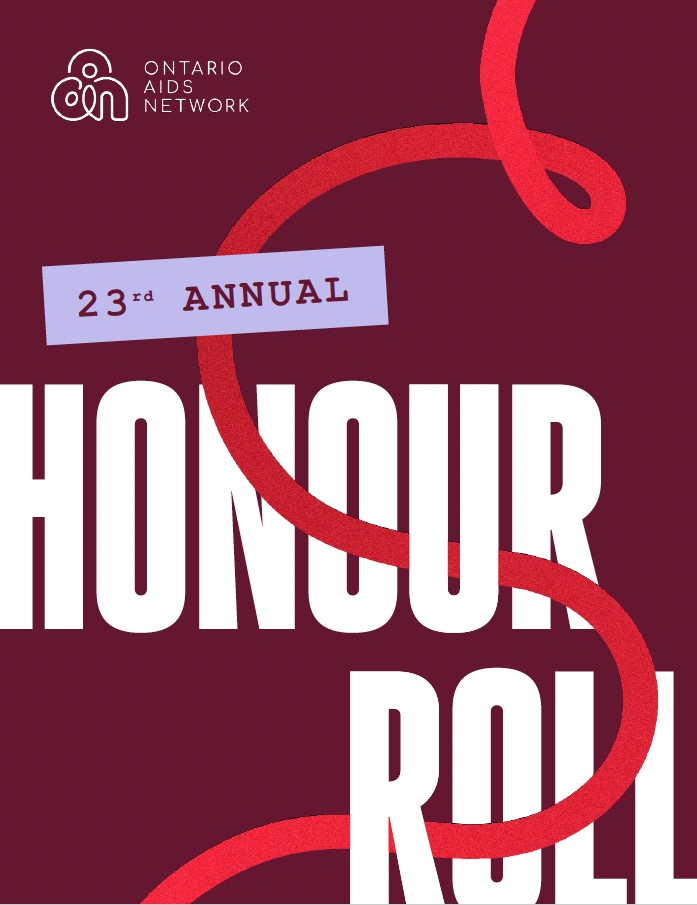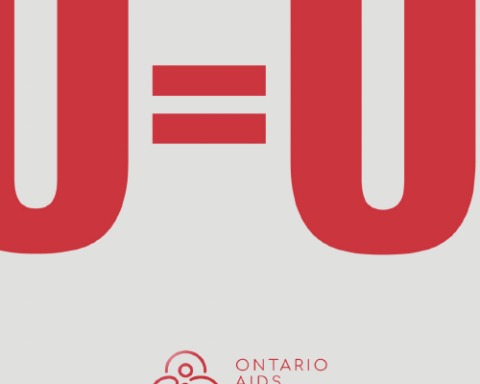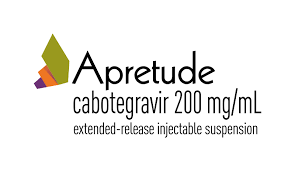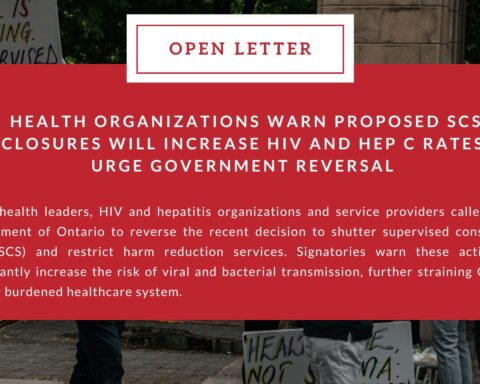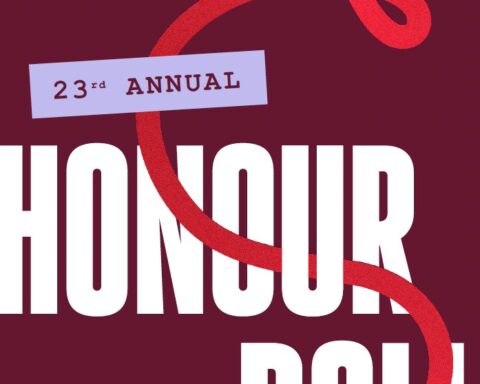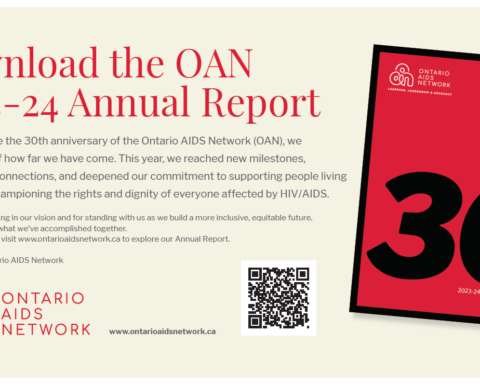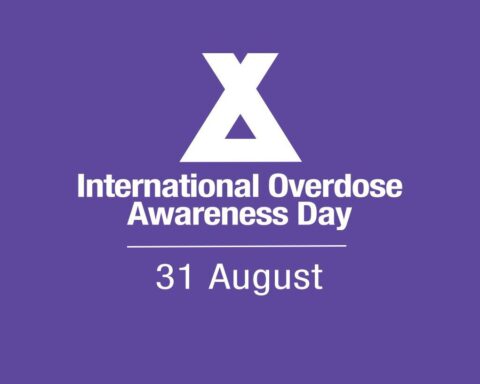The OAN Honour Roll has recognized over 120 outstanding individuals and organizations for their contributions to Ontario’s HIV response. It has become one of Ontario’s most esteemed awards within the HIV/AIDS movement. We are excited to host the awards again in early 2025. We are continuing to accept nominations. Nominate someone for one of the following awards:
Read More →That OAN invites nominations and applications for the role of Executive Director, a position that will have an indelible impact on the future of the organization as it continues to lead and inspire a strong, shared, and effective response to HIV and AIDS in Ontario.
Read More →The OAN’s Board of Directors are pleased to announce Nasra Smith will be the OAN’s Executive Director, effective July 10, 2023. Nasra comes to us with a wealth of experience in the HIV/AIDS sector, healthcare and in leadership. Nasra has over five years of senior leadership experience with both the Ontario HIV Treatment Network and the Provincial Council for Maternal and Child Health at The Hospital for Sick Children in Toronto. Part of her work at OHTN was to oversee media campaigns and organize advisory groups to address HIV medication access barriers. Nasra also managed the launch of HQ’s
Read More →Following the OAN’s Annual Meeting, we’re pleased to share our annual report summarizing OAN and GMSH activities, outputs, and financials for the 2022/23 fiscal year. In this report, you’ll find a report-back from the co-chairs of the OAN’s Board of Directors, a summary of our financials and funders, and updates about our Skills, PLID, Advocacy, and OPRAH programming. View Annual Report
Read More →While community-based service providers delivering Canada’s HIV and AIDS response are pleased to learn of APRETUDE ‘s approval, we fear this, and other HIV prevention and treatment medications, will remain inaccessible to many African, Caribbean and Black (ACB) people who continue to experience significant barriers to accessing HIV prevention treatments like APRETUDE, compounded by systemic anti-Black racism within healthcare systems.
Read More →HIV organizations and other public health leaders expressed our grave concern regarding the government’s announcement to shut down and prohibit supervised consumption services (SCS) sites and restrict harm reduction equipment distribution programs in Ontario. While we acknowledge the complexities of addressing public safety concerns surrounding the toxic drug supply, the choice to dismantle these services will have devastating consequences: reduced safety, increased preventable deaths, increased transmission of bacterial and viral infections, and soaring healthcare costs. Ultimately, these policy changes will further entrench and deepen health disparities, and Ontario will fall behind other jurisdictions in health outcomes. Read the full letter.
Read More →The OAN Honour Roll has recognized over 120 outstanding individuals and organizations for their contributions to Ontario’s HIV response. It has become one of Ontario’s most esteemed awards within the HIV/AIDS movement. We are excited to host the awards again in early 2025. We are continuing to accept nominations. Nominate someone for one of the following awards:
Read More →We are pleased to share our annual report summarizing OAN, GMSH and WHAI activities, outputs, and financials for the 2023/24 fiscal year. In this report, you’ll find a report-back from the co-chairs of the OAN’s Board of Directors, and an update from our Advisory Committee. You will also get updates about our Skills Development, the Positive Leadership Development Institute and more. The full Annual Report is available on our website for you to explore. We encourage you to dive into the report, learn more about our journey over the past year, and discover how, together, we’re creating a positive impact
Read More →The OAN is pleased to welcome Vimbayi Pheobe Munonyara as our new Lead of Equity, Diversity and Inclusion. Vimbayi brings over 15 years of experience in the HIV/AIDS sector, spanning Africa, Australia, and Canada. She has led initiatives addressing social determinants of health and championed equity, diversity, inclusion, and accessibility for marginalized communities. Most recently, she contributed her expertise to the Regional HIV/AIDS Connection. Currently a board member of the Ontario HIV Treatment Network, she remains deeply committed to health equity and social justice through research and policy development. As the new Lead, Equity at the Ontario AIDS Network, Vimbayi
Read More →March 8 is International Women’s Day (IWD). It’s a global day to recognize and honour the strength, resilience, and power in every woman’s story. Each lived experience—whether of leadership, survival, advocacy, or care—shapes the collective fight for equity and justice. In the HIV movement, women have long been at the forefront, driving change, supporting their communities, and challenging the systems that hold them back. Yet, their stories are too often overlooked. Real progress requires us to listen, uplift, and act on these experiences—ensuring that every voice is heard, every barrier is broken, and every story is valued. Strength is found in
Read More →📢 Please read and share the RFP with potential candidates! The OAN seeks proposals from insurance brokers, administrators, and consultants to develop a network-wide extended benefits and dental plan with comprehensive coverage, including HIV-related care, mental health services, gender-affirming care, and strong support for frontline workers in the HIV/AIDS sector. Deadline: March 25, 2025.
Read More →In the HIV sector, we know that trans communities encounter systemic barriers to care, advocacy, and support. We must commit to ensuring that our spaces are inclusive, affirming, and driven by the leadership of trans people. Visibility must go hand in hand with action—through policy change, equitable funding, and amplifying trans voices in decision-making spaces. Trans Day of Visibility (TDOV) is a time to recognize the achievements of trans individuals while also acknowledging the ongoing challenges they face—particularly in accessing healthcare, safety, and fundamental rights. To our trans colleagues, friends, and community members: we see you, we support you, and
Read More →The OAN is seeking new board members to contribute to strategically leading the organization and helping us meet our mandate. Serving on the Board is an extraordinary opportunity for someone who is passionate about Ontario’s HIV sector. We are currently accepting Board nominations from across the province, but we’re especially looking to fill a seat from Northern Ontario. We strongly encourage nominations from individuals who are People Living with HIV, in line with our commitment to meaningful involvement. If you are interested in serving on the OAN Board, or have any questions, please complete the nomination form (below) and email it
Read More →We are proud to share the Ontario AIDS Network’s new Strategic Plan for 2025–2028 — a bold, community-informed roadmap for strengthening Ontario’s HIV response over the next three years. This plan reflects the realities our sector is navigating: funding instability, healthcare access gaps, stigma, and the growing needs of people aging with HIV. It also reflects the strength of our network and our shared commitment to a more equitable, united, and resilient future. Explore the full plan now!
Read More →Standing Together for Life Ontario AIDS Network – Drug Policy and Harm Reduction Working Group reflects on International Overdose Awareness Day On International Overdose Awareness Day, we remember the many lives lost to overdose, honour those living with grief, and recommit ourselves to action against this preventable tragedy. This year, our reflections come in the midst of a deeply troubling reality. Ontario is in the grip of an ongoing toxic drug crisis, one that has claimed tens of thousands of lives and continues to devastate families and communities with death rates surpassing the height of the AIDS crisis. The death
Read More →This year marks the 50th year of Prisoners’ Justice Day (PJD), and 50 years of prisoner solidarity and organizing for action both within and outside prisons across Ontario. This anniversary comes at a time when we are seeing legislation, both provincial and national, that is fast-tracking the criminalization of the people we work with. Provincially, the Community Care and Recovery Act, the Safer Municipalities Act and the Protect Ontario Through Safer Streets and Stronger Communities Act, and federally, the Strong Borders Act, are examples of current legislation that have serious implications for people who face disproportionate risk related to HIV
Read More →OAN member, the AIDS Committee of Toronto (ACT) is a historic agency in the HIV sector. It is the country’s first AIDS Service Organization (ASO) and a pillar of support for people living with HIV in Toronto. We are saddened to learn about ACT’s upcoming closure. We send our deepest appreciation and thanks to all the staff, volunteers, and leaders who dedicated themselves to this work. In this significant moment, it is crucial that this closure not be misinterpreted as a sign that HIV is no longer an issue. With the inaccessibility of medications, miseducation and stigma of HIV, a
Read More →The Ontario AIDS Network (OAN) is pleased to invite members to an important learning opportunity: Indigenizing & Decolonizing Your Workplace, facilitated by Indigenous Works. REGISTER NOW Date: November 6, 2025Time: 10:00 AM – 12:00 PM ESTLocation: Zoom This interactive session will support leaders in taking practical steps toward decolonizing and indigenizing their workplace systems — including leadership practices, human resources, partnerships, and strategy. Participants will also explore how the Two-Eyed Seeing framework can guide organizations in building more inclusive, respectful, and culturally safe environments.
Read More →We’re proud to share the Ontario AIDS Network’s 2024–2025 Annual Report, which highlights a year of collaboration, growth, and impact across Ontario’s HIV sector. This report details our organization’s activities, finances, accomplishments, and impact over the past year. It includes updates from our Advisory Committee of People Living with HIV, Skills Development Program, Positive Leadership Development Institute (PLDI), the Women and HIV/AIDS Initiative (WHAI), the Gay Men’s Sexual Health Alliance (GMSH) and much more. Together, these programs and leadership bodies demonstrate the depth and diversity of our network, which continues to strengthen capacity, amplify lived experience, and champion equity across
Read More →
